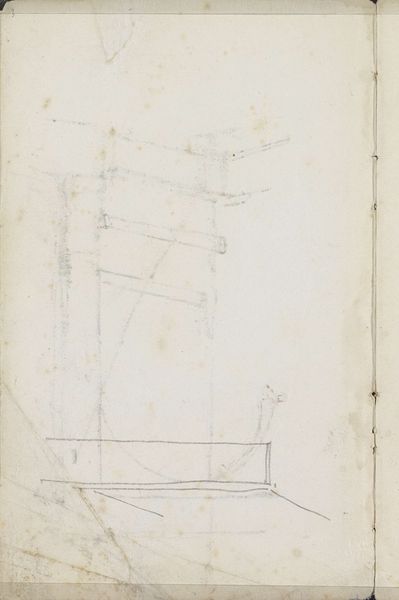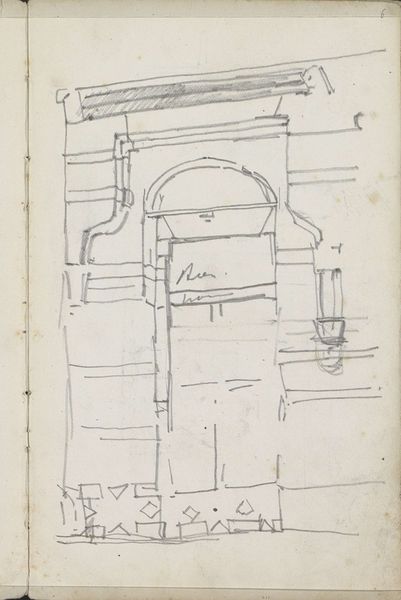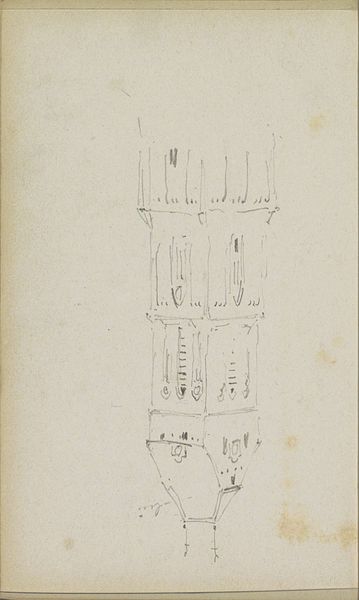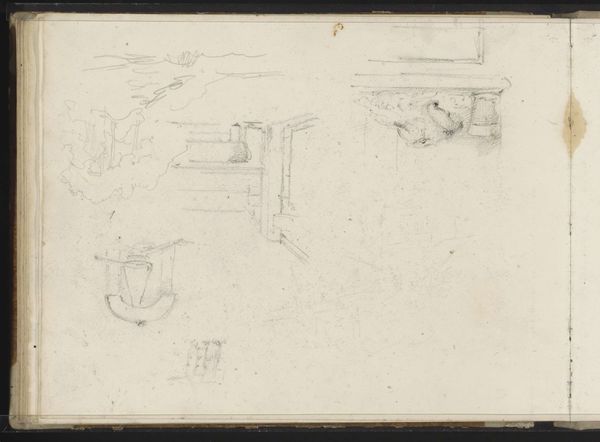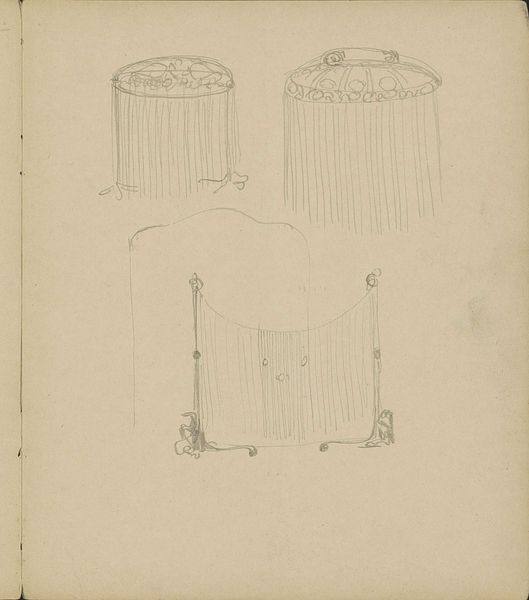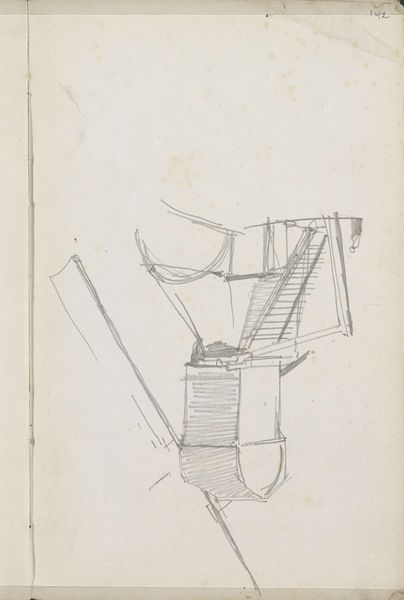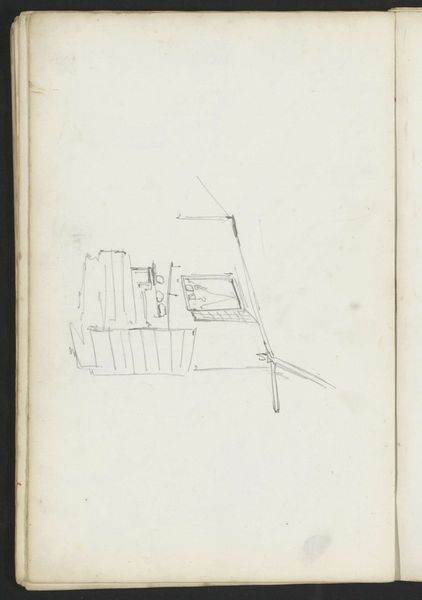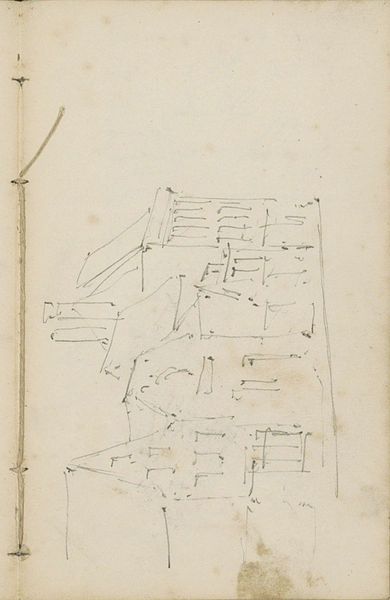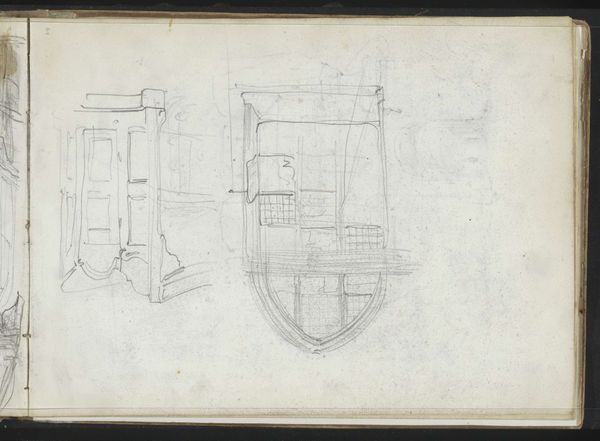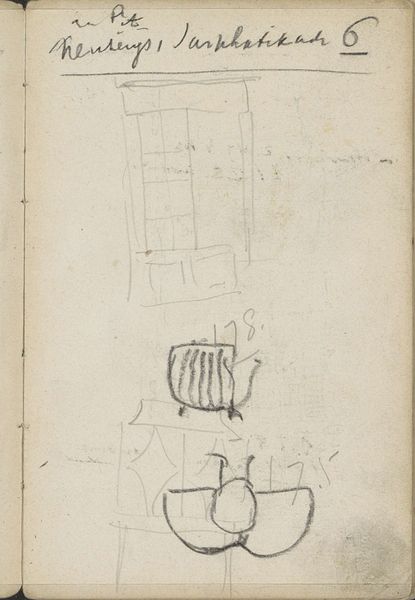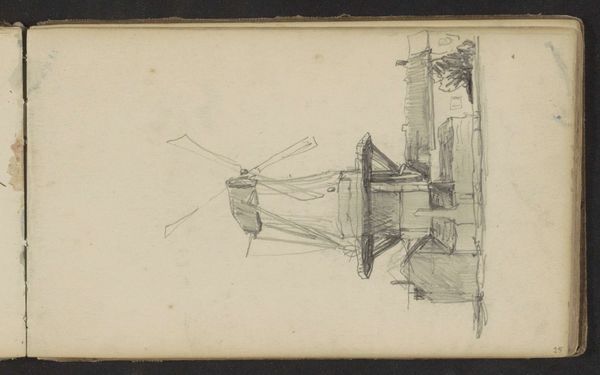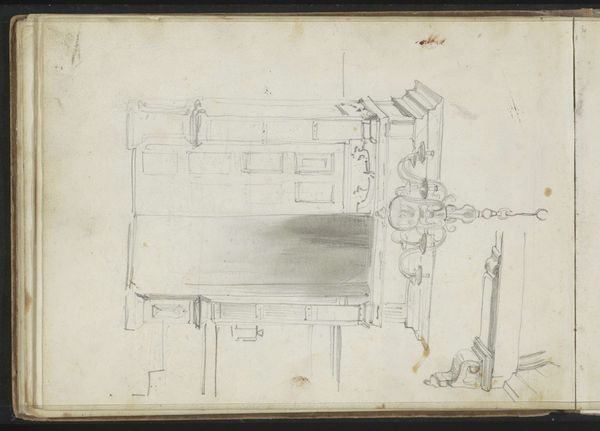
drawing, pencil
#
drawing
#
landscape
#
pencil
#
academic-art
#
building
Copyright: Rijks Museum: Open Domain
Curator: Here we have Willem Koekkoek’s pencil drawing, "Toren van hutten," which translates to "Tower of Huts," placing it somewhere between 1849 and 1895. It is currently housed right here in the Rijksmuseum. What are your initial impressions? Editor: The sketchiness is what immediately strikes me. There’s a real rawness and immediacy to it that feels almost like a blueprint or a preliminary study. But for what, exactly? Curator: That’s a great point. Koekkoek was known for his cityscapes and landscapes in the style of academic art, focusing on architectural precision, but here it feels more…utilitarian? One could easily see him developing architectural works but, equally so, studies such as this help us contextualize the urban structures of this period. Editor: The huts, precariously stacked, imply something about social hierarchy as well. The upward thrust of the composition—if you can even call it that—suggests ambition, but an ambition rooted in instability and inequality. Curator: You’re certainly right about its precarious nature. Consider how this ties to broader narratives of poverty, class, and resource distribution during that era. The sketch format almost undermines any potential monumentality the tower could possess. It speaks more of provisional architecture born of immediate need. Editor: I'm wondering who the architecture actually houses: who inhabits this precarious construction and what is the impact that its structure has on community identity? This brings up important questions about informal economies, migratory conditions, and how resources get bartered in an uneven, unfair playing ground. Curator: Precisely, we are observing something beyond mere architecture—an indication of political and social power. Koekkoek probably encountered that type of vernacular architecture frequently in the course of his work as a landscape artist. What might surprise modern audiences is seeing the architectural structures of wealth next to housing solutions such as this. Editor: Seeing art in terms of architectural history encourages discussion of larger questions that focus on urban studies and class, race, and power. . Curator: Right—it allows us to read historical artistic styles and methods within evolving social environments. Editor: Ultimately, that's the core purpose of museums, is it not? They're charged with opening these channels for interpretation, so contemporary audiences feel more engaged.
Comments
No comments
Be the first to comment and join the conversation on the ultimate creative platform.
